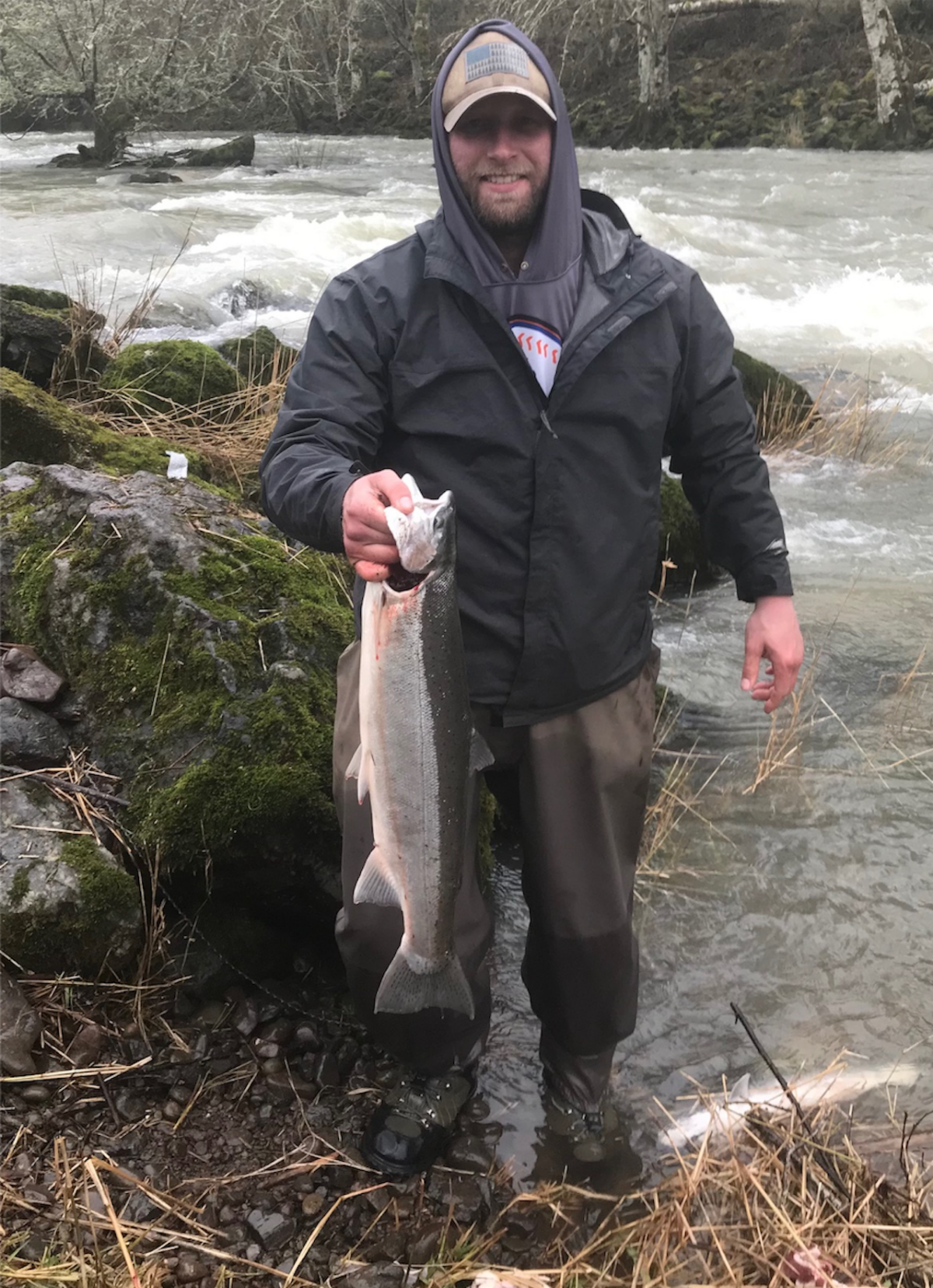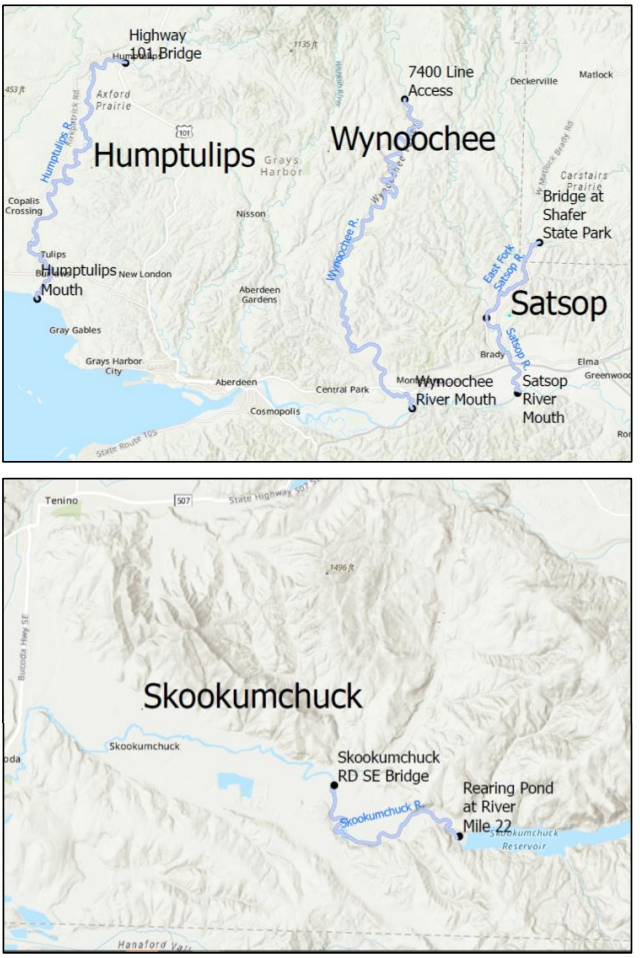
Grays Harbor Rivers Will Not Open For Hatchery-directed Winter Fisheries
There will be no hatchery-directed winter steelhead and coho fisheries on Grays Harbor rivers.

High-ranking state fishery managers say they were unable to reach an agreement with tribal comanagers during multiple meetings over the past two weeks, so the Humptulips, Wynoochee, Satsop and Skookumchuck will remain closed for the season.
Surplus steelhead from their state hatcheries will again be planted in local lakes.
It would all be a bitter pill if anglers hadn’t already tasted the same damn one during the full 2021-22 winter closure and took a three-quarter-strength dose last December, when hatchery coho retention was at least allowed for a couple weeks on the lower Chehalis, Humptulips and mainstem Satsop.
Ostensibly, the reason for the 2023-24 Harbor closure is that wild steelhead returns to the Chehalis and Humptulips basins, which have been chronically below escapement in recent years, are forecast to come in yet again below state and tribal goals, albeit with enough to provide some measure of recreational fishing within WDFW’s statewide steelhead management plan, if an agreement could have been reached with the Quinault Indian Nation.
In public meetings with anglers last month, Region 6 fisheries manager James Losee talked up the monitoring plan he and his staff had put together to be able to reopen the Hump, ‘Nooch, Satsop and Skook – which all closed as of December 1 – to tap into late-returning hatchery coho and early clipped winter steelhead while avoiding impacts on wild winter-runs. “We worked really hard on these Chehalis and Humptulips plans. We’re really proud of them,” Losee stated at the time, billing it all as “a really responsible plan that we’re proud of from a conservation perspective.”

After WDFW finished the work of approving winter fisheries on Willapa Bay tribs and the Hoh and Quillayute systems, agency honchos including Director Kelly Susewind met repeatedly with the Quinaults in hopes of getting the nation on board with their plans. The sensitivity of discussions required something of a buffer, but then things began to drag on longer than initially hoped.
In recent days, as the runoff from all of December’s atmospheric rivers drained out through the Harbor, so too did all hope. It was a no-go between the parties that this fall were also at loggerheads over early-season coho returns here, as well as other fisheries business.
“We were not able to come to agreement on our proposed Grays Harbor fisheries. The Director and I met with QIN policy reps on four occasions over the last two weeks and could not get them comfortable with our plan,” said Kelly Cunningham, WDFW Fish Program director, this afternoon. “This is pretty disappointing, as we feel our proposal did a nice job of balancing our conservation concerns with some modest opportunity, directed at hatchery fish, for recreational anglers.”
Trumped in the process is the agreement WDFW and the Quinaults and the rest of Western Washington’s tribes reached back in April on 2023-24 salmon fisheries in the Harbor and elsewhere.
State hatcheries this fall have seen huge surpluses of coho – 6,139 more than needed for spawning requirements on the Humptulips, 3,542 extra on the Wishkah, a whopping 29,113 at two facilities on the Satsop – and they probably will see a thousand or more surplus steelhead this winter too, fish that will end up in stillwaters such as Fort Borst Park Pond, Vance Creek Pond 2 and Lake Sylvia, if last winter is any indication.
QIN has not posted any winter fishery regulations for netting Grays Harbor rivers, which they closed in late October. In the past, tribal managers have communicated “extremely clearly” an intention to protect wild steelhead as much as possible in the Chehalis Basin.
To be clear, Cunningham describes himself as personally “pretty disappointed” about how things turned out.
He sounds pretty sure anglers won’t give a damn about how hard WDFW worked to open the harbor’s four hatchery tribs for them, but says they tried.
“Hundreds of regional staff hours modeling impacts, developing monitoring plans, pre-season planning, town halls, commission meetings … It’s a significant workload.”
Bitter pills for everyone.
